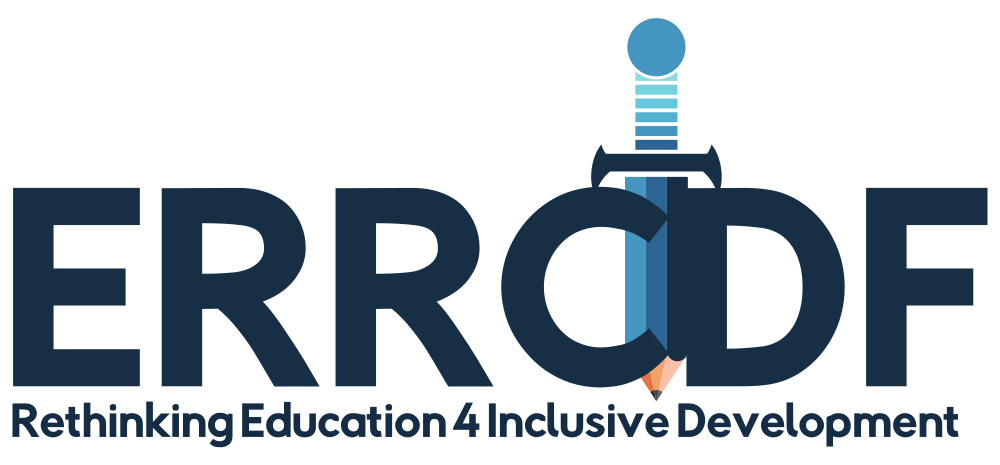Influence of Knowledge and Skills Empowerment on Sustainability of Forest Conservation Projects in Kenya
Keywords:
Knowledge, Skills, Empowerment, sustainability, forest projectAbstract
This research examined the influence of knowledge and skills empowerment activities on the sustainability of forest conservation projects in Kenya. In this study, the sustainability of forest conservation projects was viewed as its ability to attract more stakeholders and continuously provide benefits to the community and the ecosystem after donor funding. Community empowerment was considered to entail the ability of an individual or group of individuals to proactively take control of their daily activities as well as solve associated daily challenges with little or no external intervention. Knowledge and skills empowerment in forestry projects involves gaining competencies in varied forestry activities including tree nurseries establishment, fire-fighting, agroforestry and pest and diseases management in individual tree strands and closed-canopy forests. The study was undertaken in Mbololo and Mwambirwa forests located in Taita-Taveta County of Kenya. The study used a cross-sectional survey research design and relied on mixed methods in data collection and analysis. The study sample comprised 365 respondents for quantitative data and six respondents for qualitative data. Observation and secondary data was also used in the study. Data were analysed using frequencies, mean and standard deviation as well as correlation and regression analysis. The results (r = 0.565, n = 365, p = 0.000) revealed a moderate positive significant relationship between knowledge and skills empowerment and sustainability of forest conservation projects. The null hypothesis that there was no significant relationship between knowledge and skills empowerment and sustainability of forest conservation projects was rejected. It was concluded that knowledge and skills…
References
Akanni, P. O., Oke, A.E., Akpomiemie, O. A. (2014). Impact of environmental factors on building project performance in Delta State , Nigeria. Housing and Building National Research Center. https://doi.org/10.1016/j.hbrcj.2014.02.010
Bell, B. S., Tannenbaum, S. I., Ford, J. K., Noe, R. A., & Kraiger, K. (2017). 100 Years of Training and Development Research: What We Know and Where We Should Go. Journal of Applied Psychology, 102(3), 305–323. https://doi.org/10.1037/apl0000142
EAWLS ???????. (2012). The East African Wildlife Society Biannual Report 2012/2013.
Gilless, J. K. (2015). The Berkeley Summit—Looking to the Future for Forestry Education. Journal of Forestry, 113(6), 587–591. https://doi.org/10.5849/jof.15-066
Government of Kenya (GoK). (2005). Laws of Kenya, the Kenya Forests Act, 2005. 88(88), 1–25. http://www.kenyaforestservice.org/images/MMMB/forests act no.7 of 2005.pdf
Gruber, J., Mbatu, R., Johns, R., & Dixon, B. (2018). Measuring conservation success beyond the traditional biological criteria: the case of conservation projects in Costa Rica, Mekong Valley, and Cameroon. Natural Resources Forum, 42(1), 19–31. https://doi.org/10.1111/1477-8947.12132
Himberg, N., Omoro, L., Pellikka, P., & Luukkanen, O. (2009). The benefits and constraints of participation in forest management. The case of Taita hills, Kenya. Fennia, 187(1), 61–76.
Husereau, D., Drummond, M., Petrou, S., Carswell, C., Moher, D., Greenberg, D., Augustovski, F., Briggs, A. H., Mauskopf, J., & Loder, E. (2013). Consolidated Health Economic Evaluation Reporting Standards (CHEERS) statement. Cost Effectiveness and Resource Allocation, 11(1), 6. https://doi.org/10.1186/1478-7547-11-6
Kadurenge, B. M., & Nyonje, R. O. (2017). In Search for an Alternative Stakeholder-Participation Model. International Journal of Humanities and Social Sciences, 7(1), 124–138.
Kadurenge, B. M., Nyonje, R. O., Onguko, B. B., & Ndunge, D. K. (2016). The Evolving Nature of Community Participation in Public Development Projects in Kenya?: A Literature review. 6(9), 31–38.
Kashimshetty, Y., Pelikan, S., & Rogstad, S. H. (2017). Effective seed harvesting strategies for the ex situ genetic diversity conservation of rare tropical tree populations. Biodiversity and Conservation, 26(6), 1311–1331. https://doi.org/10.1007/s10531-017-1302-3
Kennedy R, I., & Gangulin, N. (2016). N2-Fixing Trees for Profitable Farm Forestry. The Journal “Agriculture and Forestry,” 62(1), 29–36. https://doi.org/10.17707/AgricultForest.62.1.02
Kenya Forest Service. (2015). Participatory Forest Management Guidelines.
Kimutai, D., & Watanabe, T. (2016). Forest-Cover Change and Participatory Forest Management of the Lembus Forest, Kenya. Environments, 3(3), 20. https://doi.org/10.3390/environments3030020
Klinge, C. M. (2015). A Conceptual Framework for Mentoring in a Learning Organization. Adult Learning, 26(4), 160–166. https://doi.org/10.1177/1045159515594154
Larcher, A., Turri, F., Collins, J., Derweesh, I., Volpe, A., Kaouk, J., Ficarra, V., Capitanio, U., Porpiglia, F., Siemer, S., Koon, R., Stolzenburg, J. U., Ahlawat, R., Murphy, D., De Naeyer, G., Vaessen, C., Challacombe, B., Novara, G., Porter, J., … Mottrie, A. (2018). Mp01-17 Definition of a Structured Training Curriculum for Robot-Assisted Partial Nephrectomy: a Delphi-Consensus Study From the Erus Educational Board. The Journal of Urology, 199(4), e9. https://doi.org/10.1016/j.juro.2018.02.123
Lundvall, B. Å., & Rasmussen, P. (2016). Challenges for adult skill formation in the globalising learning economy – a European perspective. International Journal of Lifelong Education, 35(4), 448–464. https://doi.org/10.1080/02601370.2016.1203364
Motta, M. (2016). A blended learning environment based on the principles of deliberate practice for the acquisition of interpreting skills. Interpreter and Translator Trainer, 10(1), 133–149. https://doi.org/10.1080/1750399X.2016.1154347
Muoria P., Barasa F., Mwinami T., Kanga E., Mwang’ombe J., Ithagu B., Mulwa R., Matiku P., and N. F. (2013). Kenya ’ s Important Bird Areas Status and Trends Publications available at Nature Kenya.
Njoroge, N. N., Wambugu, L. N., Wanyoike, J. N., & Gathiru, M. K. (2016). Effectiveness of Empowerment Evaluation Approach in Community Programs. International Journal of Business and Social Science, 7(6), 194–200. http://www.ijbssnet.com/journals/Vol_7_No_6_June_2016/18.pdf
Oballa, P. O., Konuche, P. K. A., Muchiri, M. N., & Kigomo, B. N. (2010). Facts on Growing and Use of Eucalyptus in Kenya. Kenya Forestry Research Institute, September, 30p, Nairobi , Kenya. https://www.fornis.net/syste. https://doi.org/10.1007/s00330-014-3569-z
Patrick, J., Morgan, P. L., Smy, V., Tiley, L., Seeby, H., Patrick, T., & Evans, J. (2015). The influence of training and experience on memory strategy. Memory and Cognition, 43(5), 775–787. https://doi.org/10.3758/s13421-014-0501-3
Pesendorfer, M. B., & Koenig, W. D. (2017). Competing for seed dispersal: evidence for the role of avian seed hoarders in mediating apparent predation among oaks. Functional Ecology, 31(3), 622–631. https://doi.org/10.1111/1365-2435.12770
Santos, A. R. dos, Antonio Alvares Soares Ribeiro, C., de Oliveira Peluzio, T. M., Esteves Peluzio, J. B., de Queiroz, V. T., Figueira Branco, E. R., Lorenzon, A. S., Domingues, G. F., Marcatti, G. E., de Castro, N. L. M., Teixeira, T. R., dos Santos, G. M. A. D. A., Santos Mota, P. H., Ferreira da Silva, S., Vargas, R., de Carvalho, J. R., Macedo, L. L., da Silva Araújo, C., & de Almeida, S. L. H. (2016). Geotechnology and landscape ecology applied to the selection of potential forest fragments for seed harvesting. Journal of Environmental Management, 183, 1050–1063. https://doi.org/10.1016/j.jenvman.2016.09.073
Steele, J., Dredge, D., & Scherrer, P. (2017). Monitoring and evaluation practices of volunteer tourism organisations. Journal of Sustainable Tourism, 25(11), 1674–1690. https://doi.org/10.1080/09669582.2017.1306067
Timsina, N. P., Luintel, H., Bhandari, K., & Thapaliya, A. (2004). Action and Learning: An Approach for Facilitating a Change in Knowledge and Power Relationship in Community Forestry. In Journal of Forest and Livelihood (Vol. 4, Issue 1).
Trianni, A., Cagno, E., & Farné, S. (2015). Barriers , drivers and decision-making process for industrial energy efficiency?: A broad study among manufacturing small and medium-sized enterprises q. Applied Energy. https://doi.org/10.1016/j.apenergy.2015.02.078
V?´tkova’, L., Dhubha´in, A., and Pommerening, A. (2016). Agreement in Tree Marking: What Is the Uncertainty of Human Tree Selection in Selective Forest Management? Forest Science, 62(3), 288–296. https://doi.org/http://dx.doi.org/10.5849/forsci.15-133
Wekesa, C., Leley, N., Maranga, E., Kirui, B., Muturi, G., Mbuvi, M., & Chikamai, B. (2016). Effects of Forest Disturbance on Vegetation Structure and Above-Ground Carbon in Three Isolated Forest Patches of Taita Hills. Open Journal of Forestry, 6(April), 142–161. https://doi.org/10.4236/ojf.2016.62013
Downloads
Published
How to Cite
Issue
Section
License
Copyright (c) 2020 Humphrey Mwandawiro Mwambeo, Lydiah Nyaguthii Wambugu, Raphael Ondieki Nyonje

This work is licensed under a Creative Commons Attribution-NonCommercial-NoDerivatives 4.0 International License.










